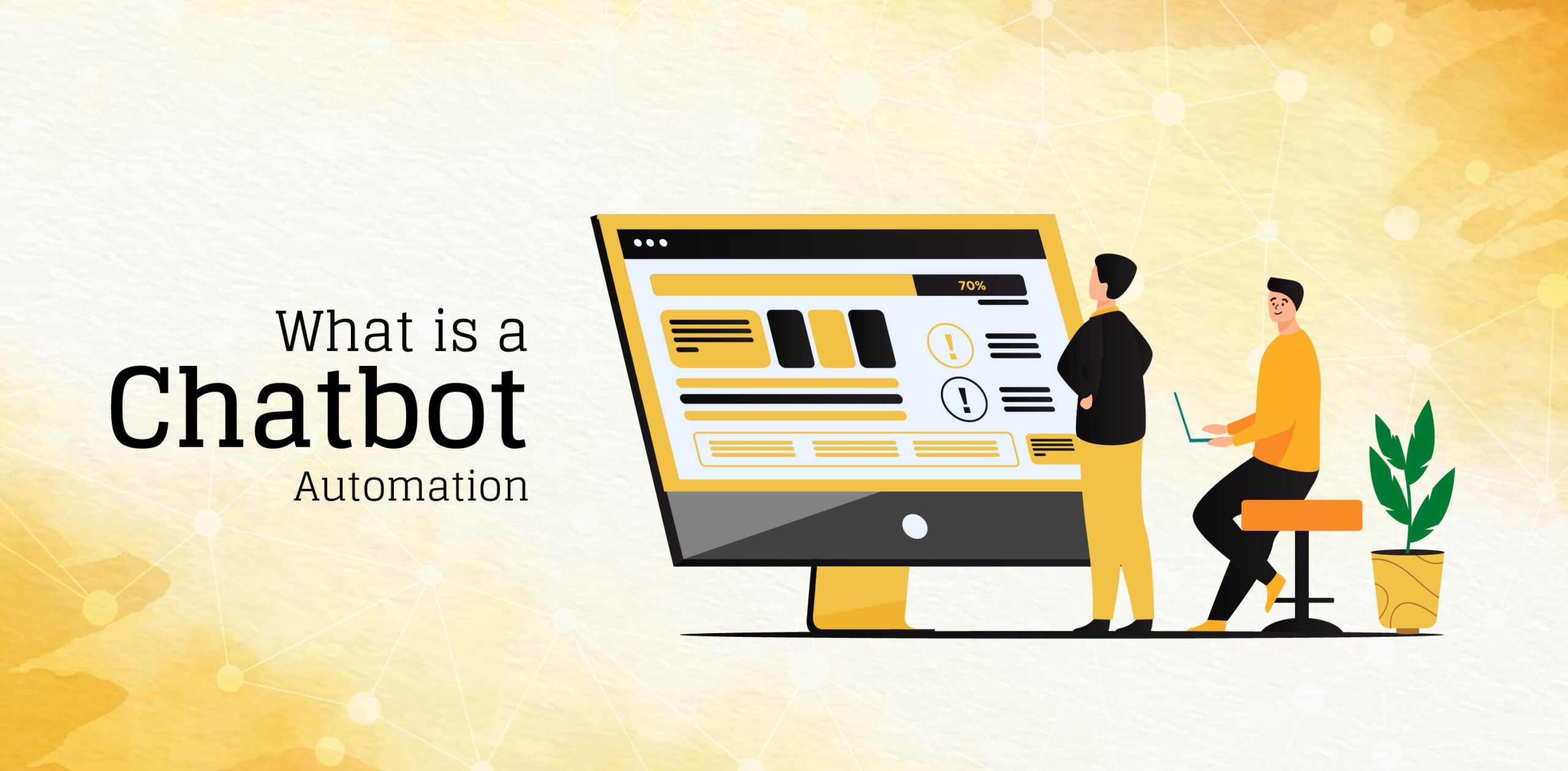In today’s fast-paced digital landscape, chatbot automation has emerged as a crucial tool for businesses seeking to enhance customer engagement and streamline operations. Chatbot automation refers to the use of artificial intelligence (AI) and machine learning (ML) technologies to create intelligent bots capable of handling customer interactions without human intervention. By leveraging chatbot automation, businesses can provide 24/7 support, improve response times, and significantly reduce operational costs.
At Codifica.ai, we specialize in developing advanced chatbot solutions that integrate seamlessly into your business processes. Our Codibots are designed to deliver personalized, efficient, and responsive customer service, helping businesses stay ahead in a competitive market.
The importance of automation in enhancing chatbot capabilities cannot be overstated. With the rise of AI-driven technologies, chatbots have evolved from simple scripted programs to sophisticated systems capable of understanding and responding to complex queries. This article aims to explain chatbot automation, how it functions, and its significance in modern business operations.
Understanding Chatbot Automation
Definition and Key Concepts of Chatbot Automation
Chatbot automation involves using AI and ML to develop chatbots that can interact with users autonomously. These chatbots utilize natural language processing (NLP) to understand and interpret human language, enabling them to engage in meaningful conversations. Chatbot automation encompasses various technologies and methodologies designed to create bots that can handle various tasks, from answering frequently asked questions to assisting with complex customer service inquiries.
How Chatbot Automation Enhances User Experience
Chatbot automation significantly enhances user experience by providing instant and accurate responses to user queries. Automated chatbots are available 24/7, ensuring that customers receive timely assistance regardless of the time or day. This continuous availability leads to improved customer satisfaction and loyalty. Additionally, automated chatbots can handle multiple interactions simultaneously, reducing wait times and improving overall efficiency.
Benefits of Implementing Chatbot Automation in Business
Implementing chatbot automation offers numerous benefits for businesses, including:
- Cost Savings: By automating customer interactions, businesses can reduce the need for large customer service teams, leading to significant cost savings.
- Scalability: Automated chatbots can handle an unlimited number of interactions simultaneously, making it easier for businesses to scale their operations.
- Consistency: Automated chatbots provide consistent responses, ensuring that customers receive uniform information and support.
- Data Collection and Analysis: Chatbots can gather valuable data on customer interactions, providing insights that can be used to improve products, services, and overall customer experience.
Key Components of Chatbot Automation
Natural Language Processing (NLP) and Machine Learning
NLP and ML are fundamental components of chatbot automation. NLP enables chatbots to understand and interpret human language, while ML allows them to learn from past interactions and improve their responses over time. These technologies work together to create chatbots that can understand context, recognize user intent, and provide relevant responses.
Integration with Other Systems
For chatbot automation to be effective, it must integrate seamlessly with other systems such as Customer Relationship Management (CRM) and Enterprise Resource Planning (ERP) systems. This integration ensures that chatbots can access up-to-date information, enabling them to provide accurate and personalized responses. For example, integrating with a CRM system allows chatbots to access customer data and tailor their interactions based on previous interactions and preferences.
User Interface Design and Interaction Flow
The design of the user interface (UI) and interaction flow is crucial for creating a positive user experience. A well-designed UI ensures that users can easily interact with the chatbot, while a carefully planned interaction flow guides users through the conversation, helping them find the information they need quickly and efficiently. This involves designing intuitive menus, clear prompts, and logical conversation paths.
Data Analytics and Reporting Features
Data analytics and reporting features are essential for monitoring and optimizing chatbot performance. These features allow businesses to track key metrics such as response times, resolution rates, and user satisfaction. By analyzing this data, businesses can identify areas for improvement and make data-driven decisions to enhance the effectiveness of their chatbot automation strategy.
How Chatbot Automation Works
Workflow of Chatbot Automation from User Query to Response
The workflow of chatbot automation typically involves several steps:
- User Query: The user inputs a query through the chatbot interface.
- Natural Language Processing: The chatbot analyzes and understands the query using NLP.
- Intent Recognition: The chatbot identifies the user’s intent and determines the appropriate response.
- Response Generation: The chatbot generates a response based on predefined rules or learned patterns.
- Response Delivery: The chatbot delivers the response to the user in real-time.
Role of AI and Machine Learning in Understanding and Responding to Queries
AI and ML play a critical role in chatbot automation by enabling chatbots to learn from interactions and improve their performance over time. Machine learning algorithms analyze past interactions to identify patterns and trends, allowing chatbots to make more accurate predictions and provide better responses. This continuous learning process ensures that chatbots become more effective and efficient as they handle more interactions.
Examples of Automated Responses and Decision Trees
Automated responses and decision trees are key elements of chatbot automation. Automated responses are pre-defined answers to common questions, allowing chatbots to quickly address routine inquiries. Decision trees guide chatbots through a series of steps to handle more complex interactions. For example, a decision tree might help a chatbot determine the appropriate troubleshooting steps for a technical issue, guiding the user through the process step-by-step.
The Importance of Real-Time Data Processing
Real-time data processing is essential for ensuring that chatbots can provide timely and accurate responses. By processing data in real-time, chatbots can quickly analyze user queries, access relevant information, and generate appropriate responses. This capability is particularly important for handling urgent inquiries and providing immediate assistance to users.
Chatbot Automation Testing: Ensuring Quality and Performance
Chatbot testing automation involves using automated tools and processes to test the functionality, performance, and usability of chatbots. This testing ensures that chatbots operate as intended, providing accurate and reliable responses to user queries. Automated testing can identify issues such as bugs, performance bottlenecks, and usability problems, helping businesses deliver high-quality chatbot solutions.
Key Aspects of Chatbot Testing
Key aspects of chatbot testing include:
- Functionality Testing: Verifying that the chatbot performs all intended functions correctly.
- Performance Testing: Assessing the chatbot’s ability to handle a high volume of interactions without performance degradation.
- Usability Testing: Evaluating the user experience to ensure that the chatbot is easy to use and provides a positive interaction.
Importance of Continuous Testing and Quality Assurance
Continuous testing and quality assurance are critical for maintaining the performance and reliability of chatbot automation. Regular testing helps identify and address issues before they impact users, ensuring that chatbots remain effective and efficient. Continuous testing also allows businesses to adapt to changing user needs and improve the chatbot’s capabilities over time.
Introduction to Chatbot Automation Testing Tools
Chatbot automation testing tools are specialized software designed to facilitate the automated testing of chatbots. These tools provide features such as test script generation, performance monitoring, and reporting, making it easier for businesses to test and optimize their chatbot solutions. Examples of chatbot automation testing tools include Botium, TestMyBot, and Chatbot Tester.
Exploring Chatbot Automation Testing Tools
Popular Tools and Their Features
Several popular chatbot automation testing tools are available, each offering unique features and capabilities:
- Botium: Botium provides end-to-end testing for chatbots, including functionality, performance, and regression testing. It supports various chatbot platforms and allows for the creation of complex test scenarios.
- TestMyBot: TestMyBot offers a comprehensive testing framework for chatbots, supporting automated testing of conversation flows, responses, and integrations. It provides detailed reports and analytics to help businesses optimize their chatbot performance.
- Chatbot Tester: Chatbot Tester focuses on usability testing, providing tools to evaluate the user experience and identify potential issues. It supports multiple chatbot platforms and offers features such as A/B testing and user feedback analysis.
How These Tools Facilitate Automated Testing Processes
These tools facilitate automated testing processes by automating repetitive tasks, generating test scripts, and providing detailed reports on chatbot performance. They enable businesses to conduct extensive testing quickly and efficiently, ensuring that chatbots meet quality standards and deliver a positive user experience. Automated testing tools also help identify and resolve issues early in the development process, reducing the risk of defects and improving overall chatbot reliability.
Benefits of Using Automation Testing Tools in Chatbot Development
Using automation testing tools in chatbot development offers several benefits, including:
- Efficiency: Automated testing tools streamline the testing process, reducing the time and effort required for manual testing.
- Accuracy: These tools provide precise and consistent test results, helping identify issues that might be missed during manual testing.
- Scalability: Automated testing tools can handle many test cases simultaneously, making it easier to test complex chatbot interactions and integrations.
- Cost Savings: Businesses can reduce labor costs and allocate resources to more strategic activities by automating repetitive testing tasks.
Future Trends in Chatbot Automation
Several innovations and emerging technologies are shaping the future of chatbot automation:
- Advanced NLP and AI: Continued advancements in NLP and AI will enable chatbots to understand and respond to more complex queries with greater accuracy.
- Voice Assistants: The integration of voice assistants will allow chatbots to engage users through voice interactions, providing a more natural and intuitive experience.
- Predictive Analytics: Predictive analytics will enable chatbots to anticipate user needs and provide proactive support, enhancing user engagement.
Predictions for the Evolution of Chatbot Automation
The evolution of chatbot automation is expected to bring several significant changes:
- Increased Adoption: More businesses across various industries will adopt chatbot automation to enhance customer support and streamline operations.
- Enhanced Personalization: Chatbots will become more adept at personalizing interactions based on user data and preferences.
- Integration with IoT: Chatbots will integrate with the Internet of Things (IoT) to provide contextual and real-time support for connected devices.
The Growing Role of AI and Machine Learning in Enhancing Automation
AI and machine learning will play an increasingly important role in enhancing chatbot automation:
- Improved Learning Algorithms: Advanced learning algorithms will enable chatbots to continuously improve their performance and accuracy.
- Contextual Understanding: AI will enable chatbots to understand the context of interactions, providing more relevant and meaningful responses.
- Emotional Intelligence: Future chatbots may develop emotional intelligence, allowing them to recognize and respond to user emotions, creating more empathetic interactions.
Long-Term Benefits and Potential Challenges
The long-term benefits of chatbot automation include improved efficiency, cost savings, and enhanced customer satisfaction. However, businesses may also face potential challenges such as ensuring data security, maintaining user trust, and keeping up with rapidly evolving technologies.
Conclusion
Chatbot automation leverages AI and ML technologies to create intelligent bots capable of handling customer interactions autonomously. This automation enhances user experience, improves efficiency, and provides valuable data insights. Key components of chatbot automation include NLP, integration with other systems, user interface design, and real-time data processing.
The growing importance of chatbot automation in modern business cannot be overstated. As businesses strive to meet increasing customer demands and optimize operations, automated chatbots provide a scalable and cost-effective solution. Continuous advancements in AI and ML will further enhance the capabilities of chatbot automation, making it an indispensable tool for businesses across various industries.
Businesses are encouraged to explore and implement chatbot automation solutions to stay competitive and deliver superior customer experiences. By leveraging the power of AI-driven automation, businesses can unlock new efficiencies, drive customer satisfaction, and achieve sustainable growth.
The future of chatbot automation is bright, with ongoing innovations and emerging technologies poised to transform how businesses interact with customers. As AI and ML continue to evolve, chatbots will become more intelligent, personalized, and capable of handling complex interactions. Embracing chatbot automation today will position businesses for success in the digital age, enabling them to deliver exceptional customer experiences and achieve operational excellence.

